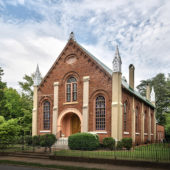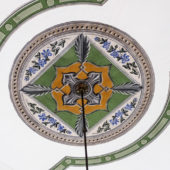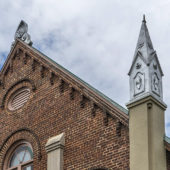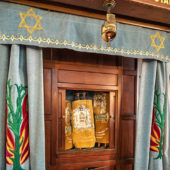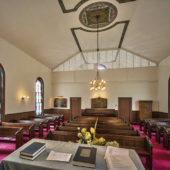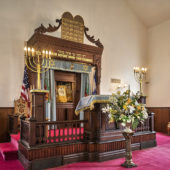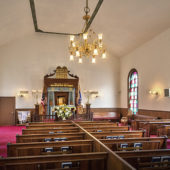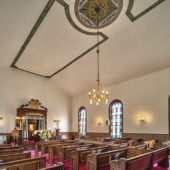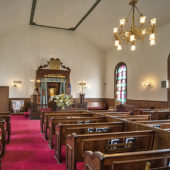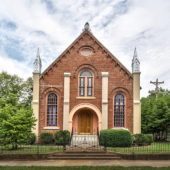The oldest house of worship in Statesville and one of less than 100 19th century synagogues in the United States.
The Wallace home became the center of religious life for the Jewish community when Congregation Emanuel was organized during a gathering on August 19, 1883. Regular worship services were held there and in the Fireman’s Hall on North Center Street for nine years until a temple was built at the intersection of West End Avenue and North Kelly Street.”
The brick, gable-end-to-the-street, Rundbogenstil building with its recessed, round-arch entrance and round-arch windows has experienced no major alterations in the century that it has served the Jewish community of Statesville. Local brick was used in construction of the exterior walls which feature corbeling decorations. The four supporting corner buttresses terminate in unique buttress caps of pressed tin with the Star of David and other ornamentation.
Most of the temple’s interior features have remained unchanged from the original design and furnishings. The detailed, hand-carved wooden Ark containing the Torah Scrolls, the wooden furnishings, and the unique painted fresco on the ceiling are attributed to the work of a Swiss-born artisan, Mr. G. Karcher, who moved to Statesville in 1875. The interior is illuminated by wall sconces and a brass chandelier hanging beneath the fresco. The fixtures originally were gas-fired and were later converted to electric. Red and green panes of manufactured patterned glass made up the windows of the synagogue. The glass reportedly was imported from England. Native wood was used to construct the pews.

